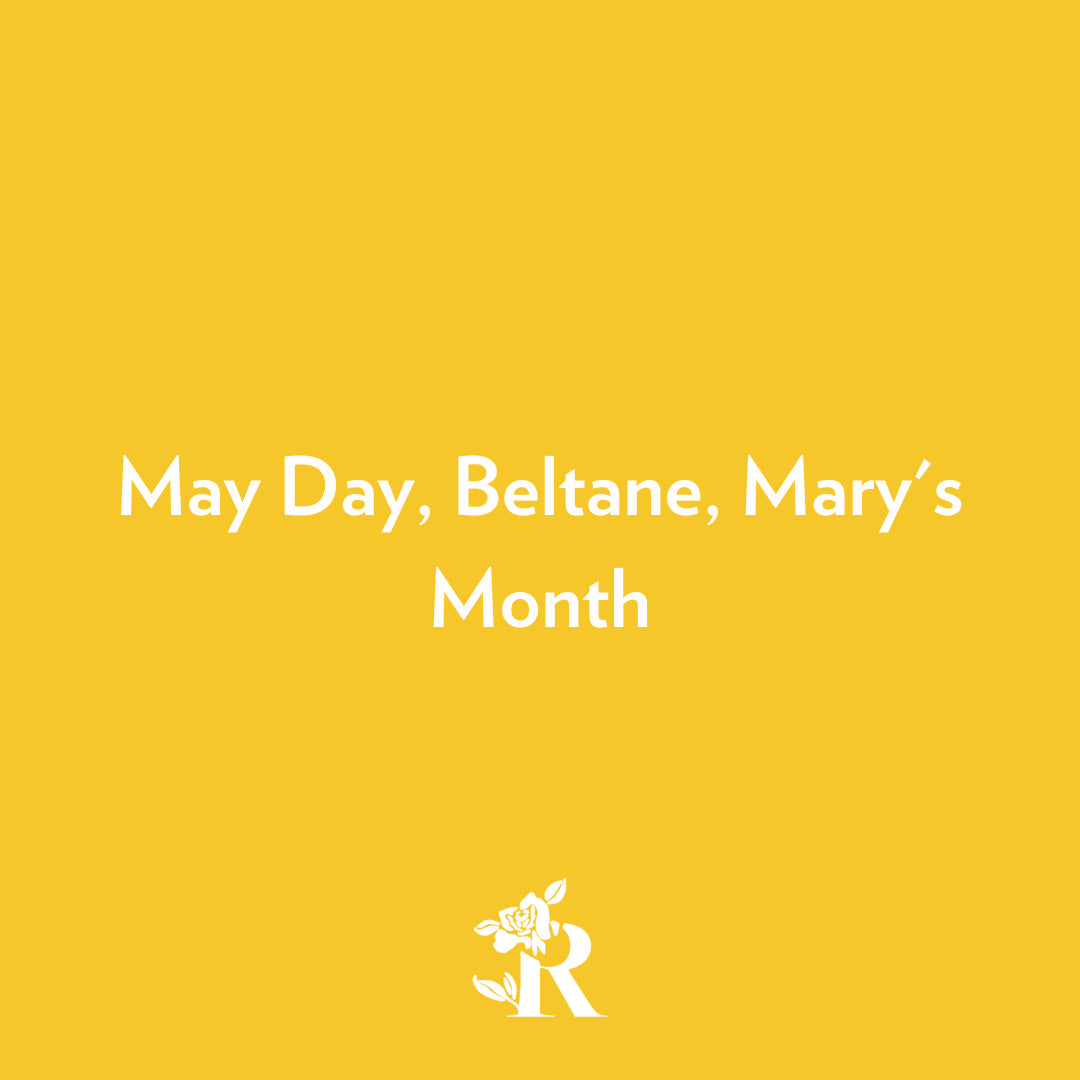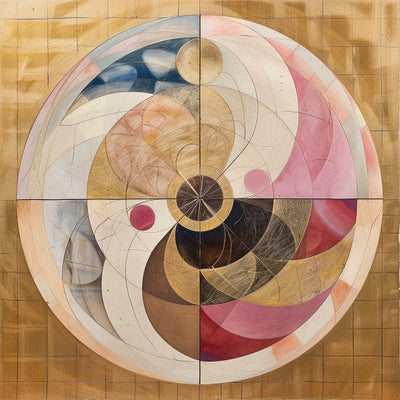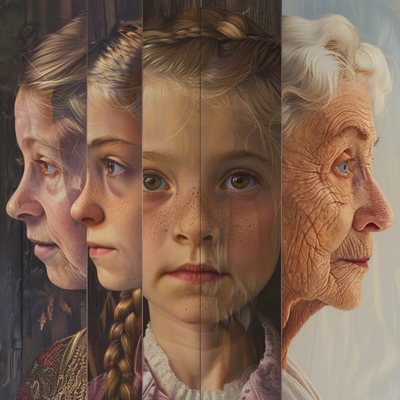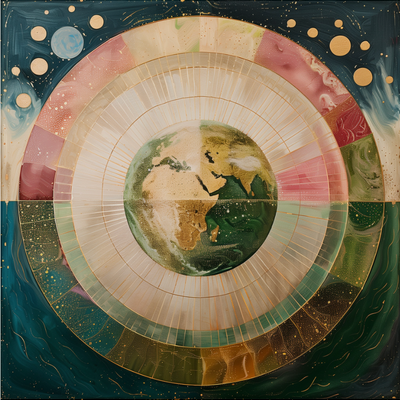May Day, Beltane, Mary's Month
May Day is traditionally celebrated as a springtime festival and a day of political and social action in many parts of the world. It’s also the echo of Beltane, a pagan holiday celebrated in the Northern Hemisphere (May 1st, or on the night of April 30th). It’s traditionally associated with the beginning of summer and the fertility of the land, to celebrate the coming of warmer weather and longer days, and to honor the gods and goddesses of fertility, growth, and renewal. Beltane is typically celebrated with outdoor rituals and festivities, including dancing around a maypole, bonfires, and feasting. It is also a time for couples to celebrate their love and commitment to each other, as it is seen as a particularly auspicious time for handfasting (a pagan wedding ceremony).
In many European countries, May Day is celebrated on May 1st with festivals and traditions that share similarities with Beltane customs. In some Christian traditions, May Day is associated with the Virgin Mary and May is known as "Mary's Month." During this time, people may decorate May altars with flowers and hold processions in honor of the Virgin Mary. The tradition of dedicating the month of May to Mary dates back at least to the 13th century, the arrival of spring became associated with the Virgin Mary, who was seen as a symbol of purity, love, and maternal care.
There are metaphysical and symbolic meanings associated with the Virgin Mary beyond her literal, historical existence. In many spiritual and religious traditions, including Christianity, Mary is seen as a powerful symbol of divine femininity, love, and compassion, such as:
- The Archetype of the Divine Mother: Mary is often seen as the embodiment of the divine feminine, representing the nurturing, loving, and compassionate qualities of the divine.Mary is often invoked for her intercession and protection, representing the idea that we can turn to her for help and guidance in times of need.
- The Embodiment of Compassion and Forgiveness: Mary's willingness to forgive and show compassion, even in the face of great suffering, is seen as a model for how we can cultivate these qualities in our own lives.
- The Union of Body and Spirit: In some traditions, Mary is seen as a symbol of the union between the human and the divine, representing the potential for all of us to experience a mystical connection with the divine.
- The Symbol of Integration: Mary's immaculate conception is seen as a symbol of purity, representing the idea that we can all aspire to a state of inner purity and spiritual perfection.
While the Virgin Mary archetype has been a positive and empowering symbol for many people throughout history, there have also been some negative unintended consequences associated with this archetype. Some of these include:
- Reinforcement of Patriarchal Values: In some interpretations of the Virgin Mary, her purity and submissiveness have been used to reinforce patriarchal values that restrict women's autonomy and agency.
- Perpetuation of Gender Stereotypes: The idealized image of the Virgin Mary as a self-sacrificing, nurturing mother has been used to perpetuate gender stereotypes that limit women's roles to caregiving and domesticity.
- Repression of Sexuality: The emphasis on Mary's virginity and purity has sometimes been used to repress women's sexuality and desire, reinforcing harmful attitudes about women's bodies and sexuality.
- Marginalization of Other Women: The focus on Mary as a singular, idealized figure has sometimes led to the marginalization of other women who do not fit this archetype, reinforcing a narrow and exclusionary understanding of femininity.
- Perpetuation of Hierarchical Religious Structures: The elevation of the Virgin Mary to a position of supreme spiritual authority has sometimes reinforced hierarchical religious structures that limit the role of women in religious leadership and decision-making.
It is important to recognize that these negative consequences are not inherent to the Virgin Mary archetype itself, but rather reflect the ways in which this archetype has been interpreted and used in different cultural and historical contexts. By embracing a more expansive and inclusive understanding of the divine feminine, we can work to address these negative unintended consequences and create a more empowering and equitable world for all.
If you want to mark May Day or Beltane yourself, here are some ways to engage:
- Attend a May Day parade or festival: Many communities hold May Day parades or festivals with music, dancing, and other festivities. Attending one of these events can be a great way to connect with your community and celebrate the arrival of spring.
- Create a May Day altar: You can create an altar in honor of the springtime season, using flowers, branches, and other natural materials. You can also include symbols of the divine feminine, such as images of the Virgin Mary or other goddesses.
- Put up a Maypole: The Maypole is a traditional symbol of May Day, representing the fertility of the land. You can create your own Maypole and dance around it with friends and family, weaving ribbons and celebrating the beauty of the natural world.
- Organize or participate in a social or political action: May Day is also a day of social and political action, focused on workers' rights, immigrant rights, and other issues related to social justice. You can participate in a rally or march, or organize your own action in support of a cause you care about.
- Practice gratitude and reflection: May Day is a time to reflect on the beauty and abundance of the natural world, and to give thanks for the blessings in our lives. You can take time to journal, meditate, or simply spend time in nature, cultivating a sense of gratitude and appreciation for all that surrounds you.
Whether its the rebirth of spring, the divine mother, or the invitation to a more just world, marking May Day is another chance to practice ritual.
To a life of reverence and gratitude, tied to our biosphere and earth.
Christine and the Rosebud Woman Team
For more rituals and ways to connect with nature, check out our book, "Reverence: Rituals for Modern Life," where we share beautiful rituals from Menarche to Menopause and Beyond.













